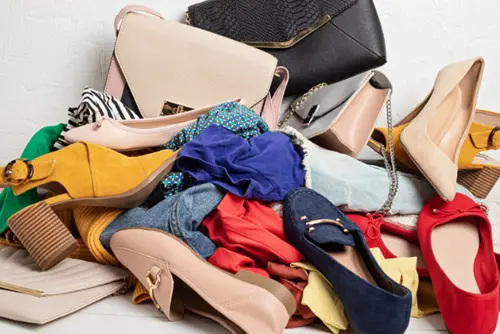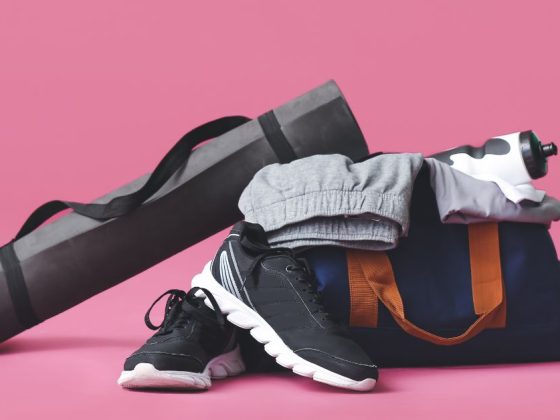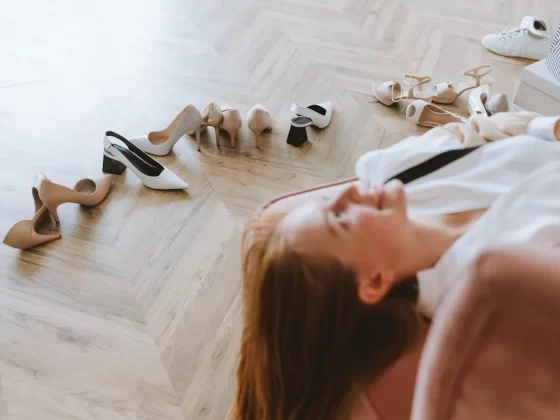Shopping for fashion can be exhilarating—whether you’re refreshing your wardrobe for the season, preparing for a special event, or just indulging in some retail therapy. However, even the most seasoned fashion lovers can fall into certain pitfalls that lead to regretful purchases, wasted money, or a closet full of unworn items.
With the endless array of online and in-store options, it’s easy to make shopping mistakes. Fortunately, understanding these everyday shopping mistakes and learning how to avoid them can help make your experience more satisfying, sustainable, and tailored to your style.
Top 10 Critical Shopping Mistakes—and How to Fix Them
1. Buying Clothes That Don’t Fit Properly
One of the most widespread mistakes in fashion shopping is purchasing clothing that doesn’t fit well. While the temptation to buy a gorgeous dress just a size too small might be intense, especially if it’s on sale, ill-fitting clothes can leave you feeling uncomfortable and lacking confidence. Wear clothes that don’t fit well, whether they’re too tight or loose, undermines your outfit.
Tips:
- Always try on clothes before buying them, whether you’re shopping online or in-store. Verify the store’s return policy for online shopping to ensure fit.
- Acquaint yourself with the sizing charts of different brands. Sizes vary widely between labels, so don’t rely solely on the number on the tag.
- Get a tape measure and accurately measure your body—bust, waist, hips, and inseam—then compare those measurements to the sizing guide.
- Don’t shy away from tailoring. If you fall in love with a piece slightly off in size but otherwise perfect, a skilled tailor can work wonders.
- Accept that your size may change over time. Shop for the body you have now, not the one you think you’ll have in a month or two.
2. Following Trends Blindly
Fashion continuously evolves, showcasing new trends on social media, in magazines, and on runways. While embracing trends can be fun to experiment with your style, following them unthinkingly can lead to regrettable purchases. Only some trends will flatter your body type, suit your lifestyle, or reflect your style, leaving you with clothes you never wear.
Tips:
- Stick to the trends that resonate with your aesthetic. If bold colors or oversized blazers aren’t your thing, don’t force them into your wardrobe just because they’re in vogue.
- Build your wardrobe around timeless pieces—think classic jeans, a well-fitted blazer, a black dress, or a neutral trench coat. These items are timeless.
- When adopting a trend, try incorporating it in smaller doses first. Start with accessories or statement pieces that can be easily paired with the classics in your wardrobe.
- Step outside your comfort zone occasionally. Be mindful of your long-term preferences and avoid impulse buys that might only be worn once.
3. Ignoring Your Style
Many people get swept up in fashion trends, social media influencers, or even the advice of well-meaning friends when shopping. While experimenting with new looks is a great way to keep your style fresh, staying true to yourself is crucial. Ignoring your style can leave you feeling like you’re playing dress-up in someone else’s clothes instead of feeling confident and comfortable.
Tips:
- Take the time to identify your style. Is your look classic, bohemian, minimalist, or edgy? Knowing the core elements of your style will help guide your shopping decisions.
- Create a style mood board, physically or on platforms like Pinterest, to help you visualize what clothes align with your aesthetic.
- Revisit your wardrobe regularly and note which items you wear most often. What do these pieces have in common? This can help refine your style and guide future purchases.
- Don’t hesitate to experiment occasionally, but make sure that each new item reflects your personality and lifestyle.
4. Shopping on an Empty Stomach
You may not realize it, but shopping while hungry can seriously impact your decision-making abilities. Hunger can cause you to feel rushed, irritable, or distracted, leading to impulsive purchases. You may buy items to get out of the store quickly rather than carefully selecting pieces that suit your needs and style.
Tips:
- Eat before shopping to stay focused and make rational decisions. Keep a healthy snack in your bag, such as nuts or a protein bar, so you can refuel if you feel low on energy during a long shopping trip.
- Take breaks throughout your shopping day. Sit down, drink, and reflect on your purchases before continuing. This pause can help curb impulse buys and give you clarity.
5. Buying Clothes You Don’t Need
Retail therapy is a natural phenomenon; sometimes, buying a new outfit can lift your spirits. However, accumulating items you don’t need can quickly lead to a cluttered wardrobe and a strained budget. Fast fashion and sales can lure us into purchasing pieces that we may never wear or that don’t fit into our existing wardrobe.
Tips:
- Before shopping, list what you need— a new pair of shoes for work, a winter coat, or a dress for an upcoming event.
- Stick to your list as much as possible, and try not to get distracted by shiny new items that don’t serve a purpose in your wardrobe.
- Be mindful of quality over quantity. Consider buying one or two high-quality items instead of five cheap ones for longer-lasting value.
- Use the “30 Wears Rule”—ask yourself if you’ll realistically wear it at least 30 times before purchasing an item. If not, put it back.
6. Not Considering the Occasion
It’s easy to fall in love with a beautiful dress or a stunning pair of shoes without thinking about where or when you’ll wear them. While having some aspirational pieces in your closet is good, it’s essential to consider how versatile and appropriate each item is for your lifestyle.
Tips:
- When shopping for a special event, always keep the occasion in mind. Is there a dress code? Will it be formal, semi-formal, or casual? Plan your purchases accordingly.
- Think about how many times you’ll realistically wear an item. Is it a versatile piece you can dress up or down, or is it a one-time outfit?
- Always consider the weather and season when shopping for an event. For example, investing in a wool coat for a summer wedding may not be the wisest choice.
7. Buying Low-Quality Clothes
Fast fashion enables easy access to affordable, trendy clothes that quickly fall apart or go out of style. While low prices can be tempting, investing in higher-quality clothes often saves money in the long run. Quality clothes look better and last longer.

Tips:
- Pay attention to fabric content and construction when buying clothing. Natural fibers like c
- otton, wool, and silk are more durable and comfortable than synthetic materials.
- Look for signs of good craftsmanship, such as sturdy stitching, quality zippers, and well-finished seams.
Research brands and read reviews before purchasing, especially if you’re unfamiliar with their quality. - Remember, the cost-per-wear equation often makes higher-quality items more affordable in the long run. Divide the item’s price by how many times you’ll wear it to understand its value.
8. Not Considering the Care Instructions
How often have you bought a beautiful garment only to realize it requires dry cleaning or delicate hand washing? Not paying attention to care instructions can lead to high maintenance costs or accidentally damaging your clothes in the wash.
Tips:
- Always check care labels before buying. If the item requires special care, consider whether you’re willing to put in the effort (or money) to maintain it.
- Opt for low-maintenance clothes whenever possible, especially for items you’ll wear frequently.
- Be realistic about your laundry habits. Avoid those pieces if you’re unlikely to hand-wash delicate items or take clothes to the dry cleaner.
9. Shopping Alone vs. With Friends
Shopping solo can empower you to focus on what you want without distractions. However, shopping with a friend or family member can be a valuable experience, especially if you trust their judgment. The key is knowing when to go it alone and when to seek a second opinion.

Tips:
- If you’re shopping for something important, like a dress for a wedding or a big event, consider bringing along a trusted friend for a second opinion.
- Know yourself—if others’ opinions easily sway you, it may be better to shop alone. Conversely, a shopping companion might help you slow down and consider your options if you rush through decisions.
- Don’t rely solely on others’ opinions. Ultimately, how you feel in the clothing is what matters most.
10. Ignoring the Sale Rack
Sale racks can be both a blessing and a curse. While they offer the chance to score amazing deals, they can also tempt you into buying things simply because they’re discounted. It’s essential to approach sales with a clear mind and a discerning eye.

Tips:
- Approach the sale racks with purpose. Set a budget, stick to it, and don’t buy something because it’s heavily discounted.
- Take your time to sift through sale items carefully. Sometimes, hidden gems are tucked away in the back.
- Apply the same rules to sale shopping as regular shopping—make sure the item fits well, aligns with your style, and is something you’ll wear repeatedly.
Conclusion
Understanding and avoiding these common shopping mistakes can make you a brighter, more confident shopper. The key to successful fashion shopping is staying true to your style, prioritizing quality over quantity, and being mindful of how each purchase fits into your life. With these strategies in mind, you’ll save money and cultivate a wardrobe full of clothes that make you feel fabulous whenever you wear them.
















